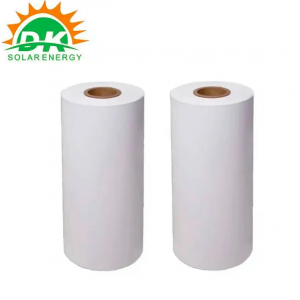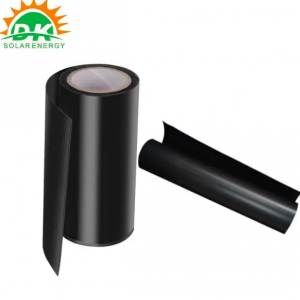In today's evolving world, renewable energy sources such as solar energy are gaining popularity for their potential to reduce carbon emissions and enhance energy security. As solar photovoltaic (PV) technology continues to improve, an often overlooked component plays a vital role in improving the overall performance and longevity of solar panels – the solar backsheet. In this blog, we’ll explore advances in solar backsheets, highlighting their importance in optimizing solar efficiency and durability.
Learn about solar back panels:
The solar backsheet is an important part of the solar module and is located on the back, opposite to the side facing the sun. Its main function is to protect the delicate and sensitive components within the solar panel (i.e. photovoltaic cells and wires) from environmental factors such as moisture, UV radiation and temperature fluctuations.
Enhanced durability for long-term performance:
In recent years, the solar industry's research and development efforts have resulted in significant improvements in the durability of solar backsheets. Manufacturers are now adopting advanced polymer materials such as polyvinyl fluoride (PVF) and polyethylene terephthalate (PET) to increase the resistance of backsheets to potential damage caused by external factors.
UV stability and weather resistance:
One of the key challenges facing solar panels is the damaging effects of ultraviolet (UV) radiation. When exposed to sunlight for extended periods of time, solar panels may become discolored, lose transparency, and reduce power output. To counteract these effects, cutting-edge solar backsheets now feature advanced UV stabilization properties that provide excellent resistance to photodegradation. These improved UV stabilization properties ensure that solar panels maintain optimal performance and appearance even in harsh climate conditions.
High thermal conductivity:
Solar panels are subject to constant thermal stress due to the heat generated during operation. Excessive heating can negatively affect the performance and life of photovoltaic cells. To this end, manufacturers are adopting backplanes with high thermal conductivity properties to dissipate heat efficiently and maintain lower operating temperatures. This technological advancement ensures stable power output and increases the overall durability of solar panels.
Improve moisture resistance:
Moisture infiltration can severely impair the performance of solar panels and cause irreversible damage. To solve this problem, the moisture resistance of solar backsheets has been greatly enhanced. The latest backsheets feature advanced barrier properties that prevent moisture ingress and subsequent corrosion, extending the life and efficiency of solar panels.
in conclusion:
The development of solar backsheets has played a key role in improving the efficiency and durability of solar panels. With advanced features such as improved UV stability, high thermal conductivity and enhanced moisture resistance, solar backsheets now offer a more reliable, longer-lasting solution for solar installations. As demand for renewable energy continues to soar, the development of cutting-edge solar backsheets will undoubtedly pave the way for greater efficiency, lower maintenance costs and higher energy output.
So, if you are considering harnessing the power of the sun, remember to choose high-quality solar panels with advanced backsheets, allowing you to unleash the full potential of clean, renewable energy and contribute to a sustainable future.
Post time: Dec-01-2023


